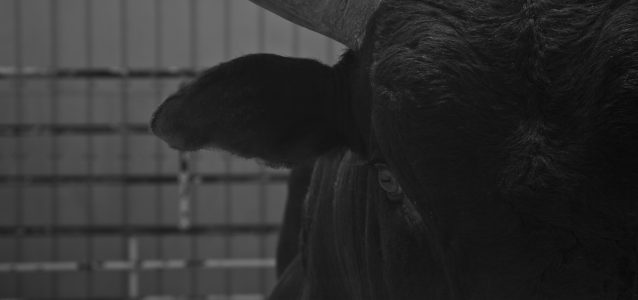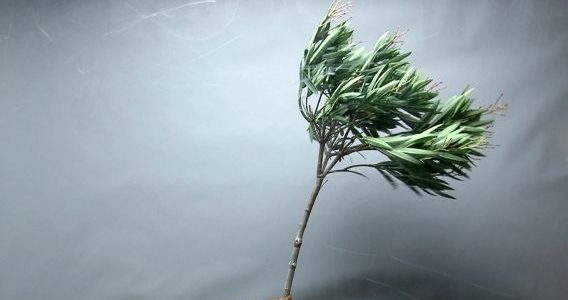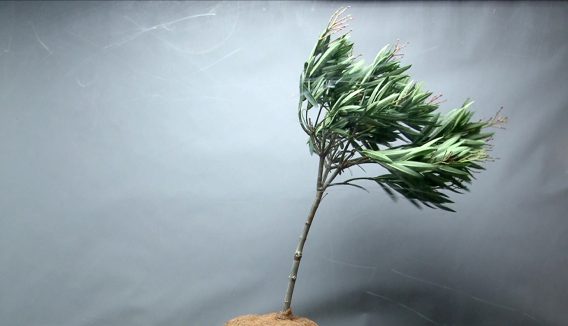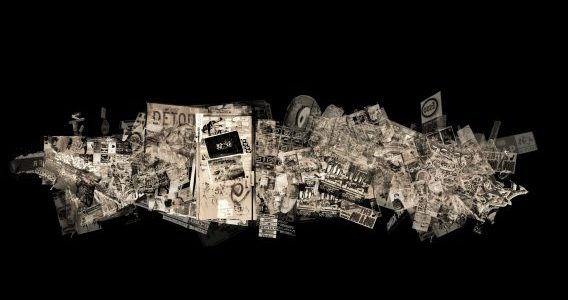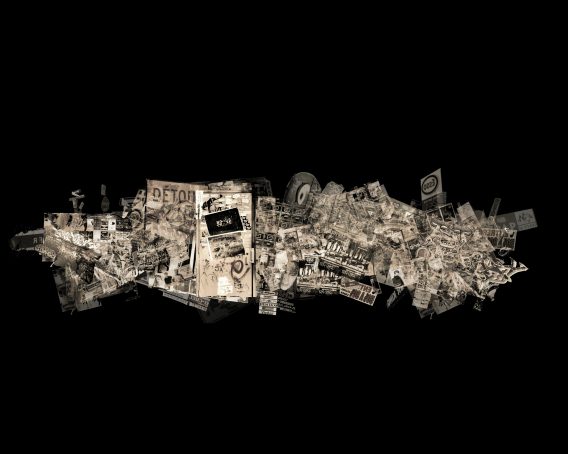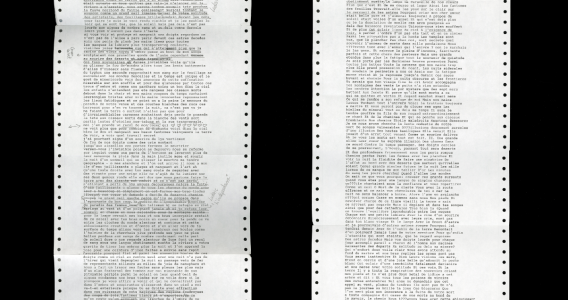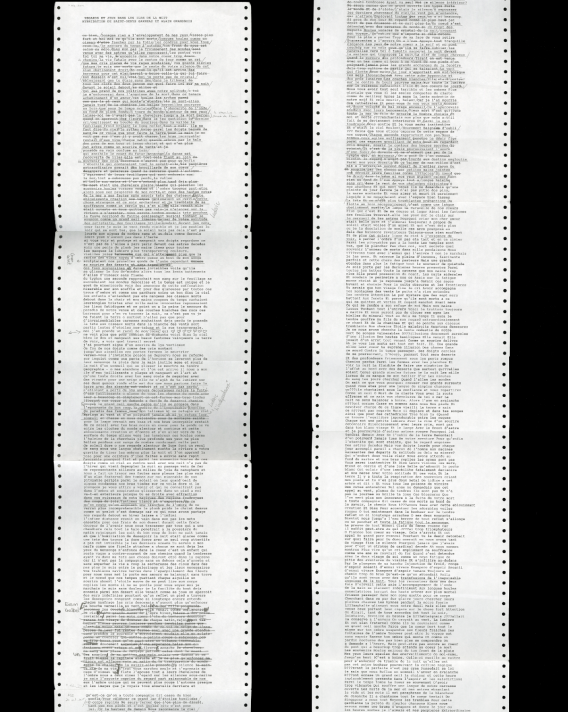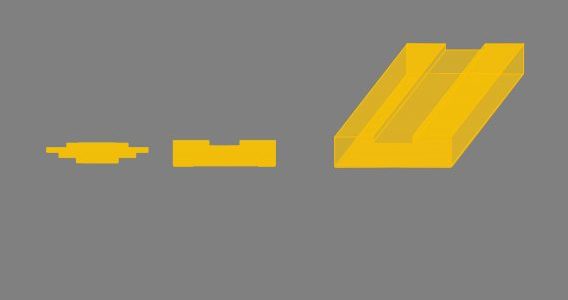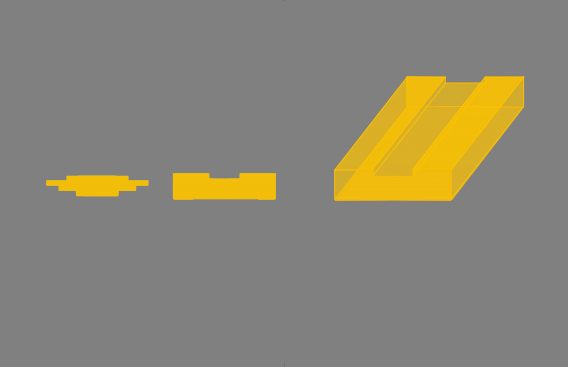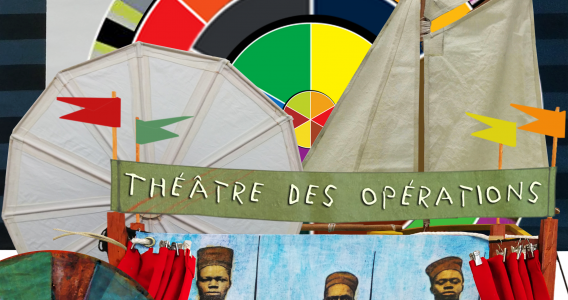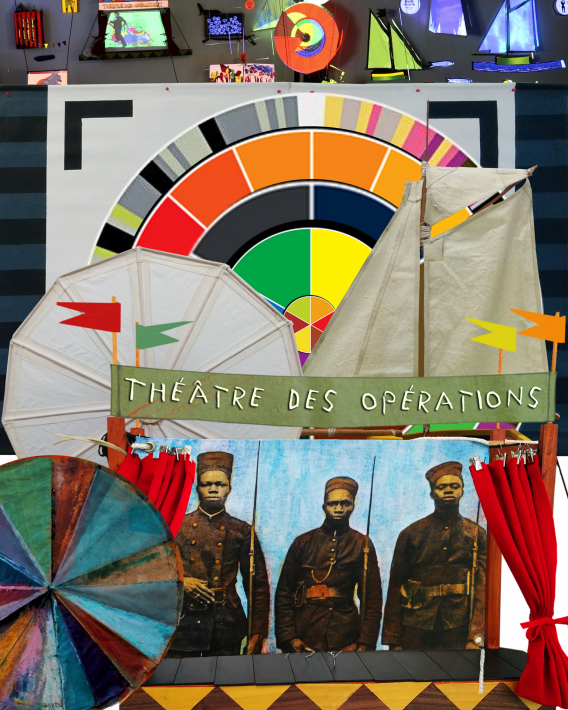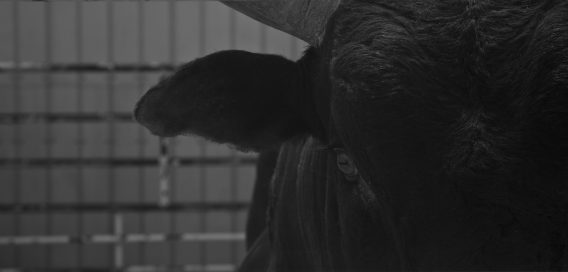
About the artists…
Jean-René Leblanc and Carl Spencer. Calgary-based artists, their collaboration on the artwork Toro Embistiendo was commissioned by the French CBC to be presented as a documentary as part of the 100th anniversary of the Calgary Stampede. It was also featured in the web documentary series Cowboy: a Canadian Dream in 2013. They are both actively involved in the arts community as Board Directors at Emmedia Gallery and Production Society and co-founders of the Sensorium Lab, a cross-disciplinary research group focusing on artistic research that develops systems of interaction that encourage kinesthetic perception and interpretation. Their practice explores the relationship between technology and culture through issues related to interactivity. Their artworks individually have been presented in Canada, the USA, Europe, Asia and Australia.
About the work…
This image was taken from one of the bulls who participated in the realization of the work Toro embistiendo, presented in the Vitrine of TOPO.
Toro embistiendo explores the image of the bull as emblematic figure of the culture of the rodeo and the cowboys in Canada. The title uses the Spanish language to refer to the bull that charges, an explicit reference to bullfighting so present in the Hispanic culture. This installation explores the game of the confrontation between the spectator and the video of a bull in his enclosure which begins to load when it is excited by passing in front of the showcase where the work is presented. Leblanc and Spencer propose a playful and metaphorical installation using interactivity to create a bridge between the real and the virtual.
• Inkjet print. Archive quality paper acid free – Fuji Premium Matte 230g. Format: 9,5×20 po. / 24×50 cm. Not framed.
• Flat rate of 150 $ CAN. Available at TOPO’s office without any other fee. If shipped, shipping and packaging costs will apply.
